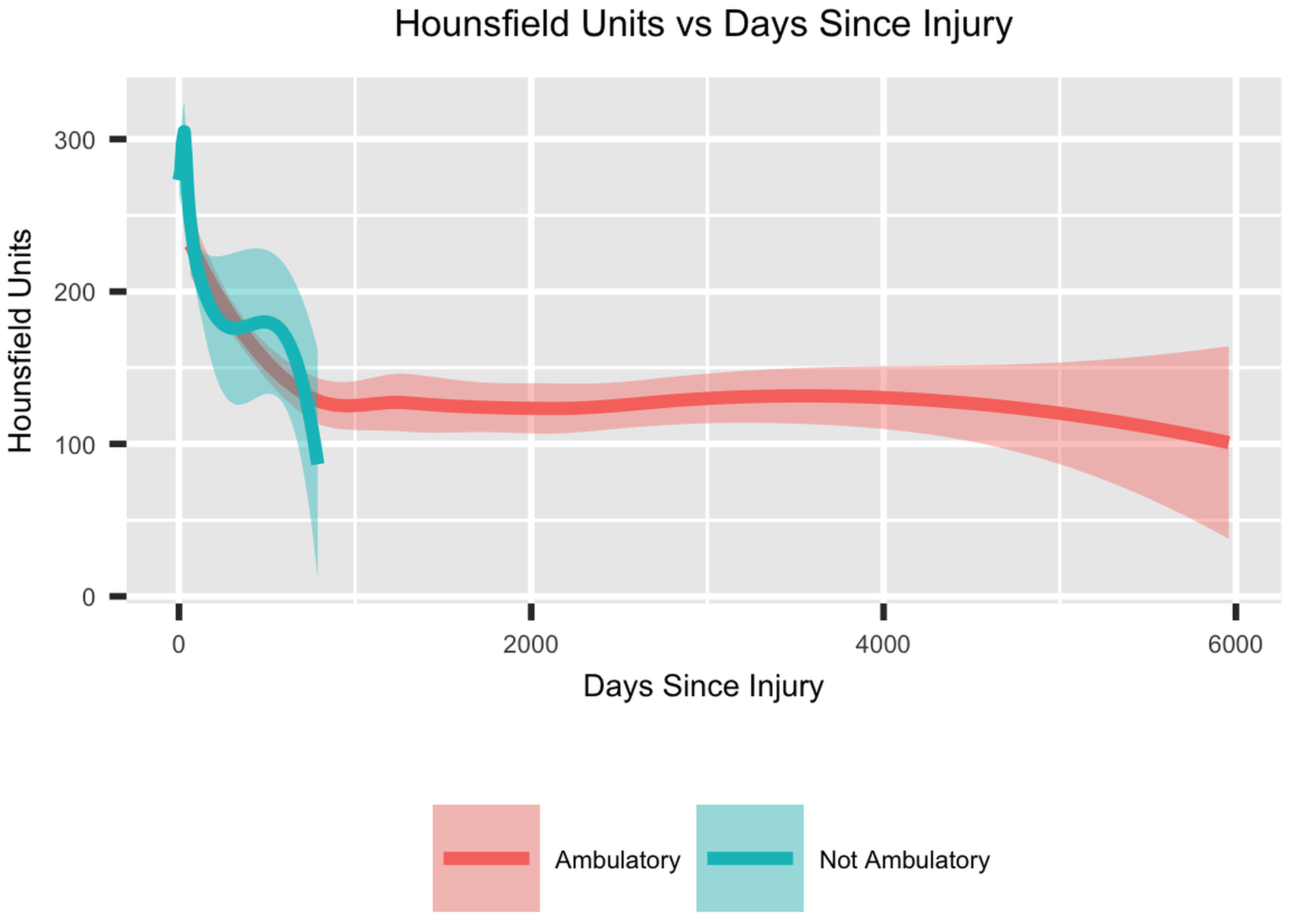Patients who sustain major trauma are at risk of bone mineral density (BMD) loss, note Hoyt et al. in a new study in JBJS. After lower-extremity amputation, the authors say, “BMD loss is exacerbated by offloading of the osseous kinetic chain with prosthesis wear, delayed weight bearing due to healing or complications, or bone resorption resulting from complex regional pain syndrome1-5.”
They further note that, while DXA is commonly used to assess BMD, its use in trauma is limited. Meanwhile, computed tomography (CT) scans are used in trauma to assess injuries, healing, or complications, among other reasons.
In a previous study, the authors found that signal attenuation—quantified in Hounsfield units (HU) on CT imaging—strongly correlated with DXA and low BMD status after lower extremity amputation6. They point out that the technique of HU-calculated BMD has been validated in other patient populations. With the current investigation, they hypothesized that using this correlation would enable them to plot the BMD loss rate, nadir, and recovery as well as identify risk factors for low BMD in patients with combat-related lower extremity amputation. The study is now available at JBJS.org:
The investigators reviewed amputations performed within the U.S. military between 2003 and 2016. A total of 128 patients with 613 femoral neck CT scans were available for analysis. Among the findings:
- Substantial BMD loss was found both for limbs with amputation and non-amputated extremities. The loss stabilized approximately 3 years following injury. Limbs experiencing amputation lost, on average, some 100 HU of BMD after 1,000 days.
- The initially rapid decline in BMD was influenced by modifiable and non-modifiable variables. Factors associated with lower BMD included nonambulatory status at the time of the scan, higher age at injury, surgical complications delaying weight-bearing, amputation proximal to the transtibial level, and active vitamin-D treatment.
In discussing their work, the authors say that while it is not yet able to guide specific treatment practices, “our imaging and analytical strategies can be readily applied as a framework for the future study of optimal prophylaxis and treatment.”
Read the full report at JBJS.org:
References
- Hoyt BW, Pavey GJ, Pasquina PF, Potter BK. Rehabilitation of Lower Extremity Trauma: a Review of Principles and Military Perspective on Future Directions. Curr Trauma Rep. 2015;1(1):50-60.
- Tugcu I, Safaz I, Yilmaz B, Göktepe AS, Taskaynatan MA, Yazicioglu K. Muscle strength and bone mineral density in mine victims with transtibial amputation. Prosthet Orthot Int. 2009 Dec;33(4):299-306.
- Flint JH, Wade AM, Stocker DJ, Pasquina PF, Howard RS, Potter BK. Bone mineral density loss after combat-related lower extremity amputation. J Orthop Trauma. 2014 Apr;28(4):238-44.
- Thomson S, Lu W, Zreiqat H, Li JJ, Tetsworth K, Al Muderis M. Proximal Bone Remodeling in Lower Limb Amputees Reconstructed With an Osseointegrated Prosthesis. J Orthop Res. 2019 Dec;37(12):2524-30.
- Tintle SM, Baechler MF, Nanos GP 3rd, Forsberg JA, Potter BK. Traumatic and trauma-related amputations: Part II: Upper extremity and future directions. J Bone Joint Surg Am. 2010 Dec 15;92(18):2934-45.
- Hoyt BW, Lundy AE, Clark DM, Colantonio D, Tintle SM, Potter BK. Femoral Neck Hounsfield Units as an Adjunct for Bone Mineral Density After Combat-Related Lower Extremity Amputation. J Orthop Trauma. 2021 May 1;35(5):e158-64.



